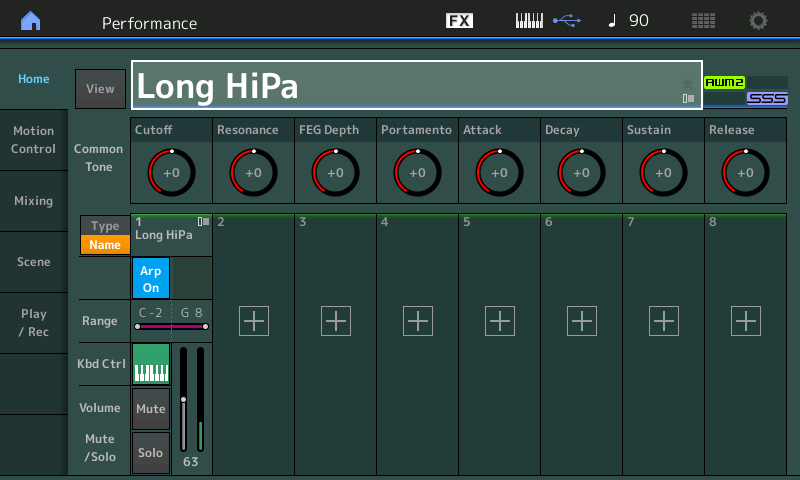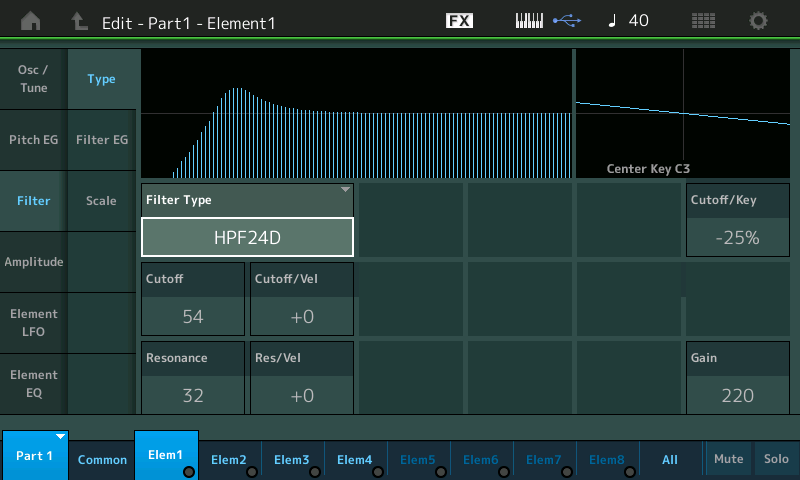Hi There,
I am trying to create the sound from the intro to I Ran by Flock Of Seagulls - not the stringy low synth, but the falling Choooooooo sound (easy to describe using tongue and teeth and a bit of air, but hard to put into words...
I realise it's some sort of resonance or cutoff play but can't find anything close and have get no idea where to start from an INIT performance.
It seems like a very classic synth sound from the 70s or 80s but my knowledge of synthesis is pretty limited.
FYI it's more the "extended" intro version - some versions on youtube just jump straight into the intro without the synth/guitar sound effect type build up
cheers
Dave.
Hi There,
I am trying to create the sound from the intro to I Ran by Flock Of Seagulls - not the stringy low synth, but the falling Choooooooo sound (easy to describe using tongue and teeth and a bit of air, but hard to put into words...
I realise it's some sort of resonance or cutoff play but can't find anything close and have get no idea where to start from an INIT performance.
It seems like a very classic synth sound from the 70s or 80s but my knowledge of synthesis is pretty limited.
FYI it's more the "extended" intro version - some versions on youtube just jump straight into the intro without the synth/guitar sound effect type build up
cheers
Dave.
Hi Dave,
Classic 1980s sound… very synthy sounding. It involves the “Filter”. A specific type of Filter and movement.
What’s a “Filter”? — it is a device that removes impurities; like a coffee filter removes the grounds from the liquid that we enjoy drinking. A Filter in a musical synthesizer, is responsible for removing certain “harmonics”
What are “harmonics”? — they are the series of related musical frequencies, that our ears and brain use to recognize sounds. A trumpet and a trombone have a similar arrangement of harmonics… but one of the ways we can easily tell them apart is the arrangement of the volumes of the different musical frequencies are as unique as fingerprint. Your ear/brain can tell the difference between musical tones, but in speech, we recognize the voices of the people we know by the balance of frequencies in their voice.
Any way long story short, the filter (with its Cutoff Frequency and Resonance Frequency, can adjust the timbre of the sound (the tone).
What makes the timbre/tone of a trombone different from a trumpet… size, shape, materials, etc.
What that expanding sound is a High Pass Filter — this is the one that sounds most “synthy” — because most acoustic instrument emulations use Low Pass Filters.
Ok HPF and LPF - What do they do? A HPF allows high frequencies to pass and blocks the low frequencies; while a LPF allows low frequencies to pass and blocks the high frequencies.
As this sound progresses you hear the upper frequencies first and as time goes on, more low frequencies are heard.
It goes from thinner to richer… in harmonic content as time moves forward.
A Filter whose “Cutoff” Frequencies starts high and sweeps downward to allow more harmonics to be heard… sounds like science fiction… like the sky is being ripped open — definitely a “tearing”, “ripping” type sound. The Cutoff Frequency is the dividing line between frequencies allowed to pass and those being blocked. The sweep from high to low gives that sound. “resonance” is the one frequency that is louder to our ears than all the others. Resonance is the frequency that can break a glass… every room, every item has a frequency that when struck will “resonante” (seem louder than the others). microphone feedback has this one frequency that “howls”… conditions are right to reinforce it and give it emphasis.
Okay that’s a really quick brief history…
Recall the MODX Performance called “Long HiPa”
Play and hold a Low note… hear how the high frequency data leads you into the sound… as you continue to hold you hear the Cutoff Frequency fall through the harmonics…. Revealing more and more low frequency content as you continue to hold ….choooooooo
You will need to lengthen the sweep by working with both the AEG (Amplitude Envelope Generator) and the FEG (Filter Envelope Generator) to get the duration of the sweep just right…
Here is an in depth look at this sound… it is of interest because it is a great place to start.
This is a Single Part (green) program, using just 4 Elements… 3 use the HPF, and one of the Oscillators is using a LPF (you can hear it slowly entering, as the other three Oscillator descend in frequency via the HPF.
From the MONTAGE tutorial article…. “MONTAGifying Motif: “Creepn Worm” (although written for MONTAGE, it applies to the MODX with a few navigational differences). This should get you started… let us know.
"Long HiPa"
- Press [CATEGORY]
- In the Search area type in "Long HiPa" to find the Single PART PERFORMANCE:

If you are listening in stereo, (and we sure hope you are) the first thing you should notice is that the filter movement is such that the high frequencies are heard first and as time goes on we hear more low frequencies being allowed through. We are hearing the result of the Amplitude Envelope Generator (loudness) and Filter Envelope Generator (timbre change). And there seem to be several distinct areas moving within the stereo field. You can feel it come from the center and split down both sides of the stereo field.
The "HiPa" spelling is revealed as a hint that this is using "High Pass" Filtering. A High Pass Filter is one that initially allows high frequencies to pass and blocks low frequencies. Why this sounds "synthy" and "atypical" to us is because in the emulative world of sound designing, it is the Low Pass Filter that does the lion's share of work when attempting to mimic instrument behavior. This is because, in general, the harder you hammer, strike, pluck, blow or bow a musical instrument, the more high frequencies it produces. Therefore, an LPF made sensitive to Key-on velocity is most often used to create this effect - and the harder you play the brighter the sound. Velocity is used to raise the Cutoff Frequency of an LPF, which means the timbre gets brighter. Here however, we are using the Envelope Generator to create movement of the Cutoff Frequency and the movement is in the opposite direction. An "envelope" describes movement over time.
The HPF24D translates to High Pass Filter 24dB per octave, Digital. For every octave you go below the Cutoff Frequency the signal will be down 24dB. This means that if you play an A440 and it is 0dB on the meter, the "A" at A220 is -24dB relative to the A440. Frequencies below the Cutoff Frequency are reduced by 24dB for each Octave you go down. This is consider a steep curve (also called a 4-pole Filter).
Later we will take a closer look into the FILTER TYPE.

Thanks Bad Mister!
Some people say social media is bad for us, but I am so happy to be able to communicate with you on the other side of the world and learn from you!
This is a very interesting question! Thanks everyone
I replace Fat Saw with White Noise in Long HiPa and sound are similar 🙂
